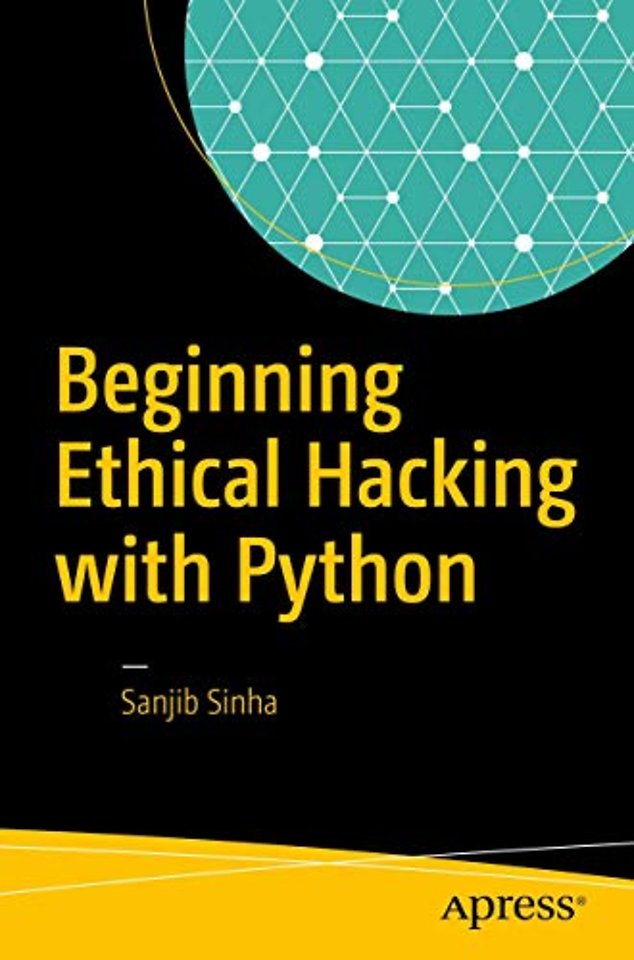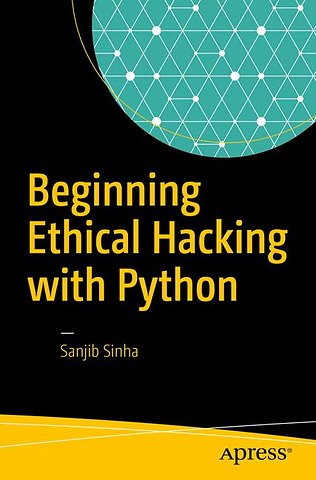Beginning Ethical Hacking with Python
Paperback Engels 2016 9781484225400Samenvatting
Learn the basics of ethical hacking and gain insights into the logic, algorithms, and syntax of Python. This book will set you up with a foundation that will help you understand the advanced concepts of hacking in the future. Learn Ethical Hacking with Python 3 touches the core issues of cyber security: in the modern world of interconnected computers and the Internet, security is increasingly becoming one of the most important features of programming.
Ethical hacking is closely related to Python. For this reason this book is organized in three parts. The first part deals with the basics of ethical hacking; the second part deals with Python 3; and the third part deals with more advanced features of ethical hacking.
What You Will Learn
Discover the legal constraints of ethical hacking
Work with virtual machines and virtualization
Develop skills in Python 3
See the importance of networking in ethical hacking
Gain knowledge of the dark web, hidden Wikipedia, proxy chains, virtual private networks, MAC addresses, and more
Who This Book Is For
Beginners wanting to learn ethical hacking alongside a modular object oriented programming language.
Specificaties
Lezersrecensies
Inhoudsopgave
PART ONEChapter - 1. Legal Side of HackingChapter - 2. Hacking Environment2.1 - Ethical Hacking and Networking2.2 - What Does Network Mean? Chapter - 3. What Is VirtualBox?Chapter - 4. Install Kali Linux & Other OS in VBChapter - 5. Linux Terminals and Basic Functionalities
PART TWOChapter 6 - Role of Python in Ethical HackingChapter 7 - Python environmentChapter 8 - General Syntaxes 8.1 - Create the main() function 8.2 - Indentation and White Space 8.3 - Commenting 8.4 - Assigning Values
Chapter 9 - Variables, Objects and Values 9.1 - Using Numbers 9.2 - String 9.3 - What is Type and ID 9.4 - Logical Values 9.5 - Tuples And Lists< 9.6 - Dictionary 9.7 - Object
Chapter 10 - Conditionals
Chapter 11 - How Loops Make Your Life Easier 11.1 - While Loops 11.2 - For Loops
Chapter 12 - Regular Expressions 12.1 - Using `re' Module 12.2 - Reusing With Regular Expressions 12.3 - Searching With Regular Expressions
Chapter 13 - Exceptions, Catching Errors
Chapter 14 - Functions 14.1 - Return Values< 14.2 - Generate Functions 14.3 - Lists of Arguments 14.4 - Named Arguments
Chapter 15 - Classes 15.1 - Object Oriented Methodology 15.2 - The Foundation of Object Orientation 15.1 - Understanding Classes and Objects 15.2 - Write Your Own Game "Good VS Bad" 15.3 - Primary Class and Object 15.4 - Accessing Object Data 15.5 - Polymorphism 15.6 - Using Generators 15.7 - Inheritance 15. 8 -Decorator
Chapter 16 - String Methods
Chapter 17 - File Input and Output
Chapter 18 - Containers 18.1 - Operating on Tuple and List Object 18.2 - Operating on Dictionary Object
Chapter 19 - Database 19.1 - Let us start with SQLite3 19.2 - MySQL for Big Project
Chapter 20 - ModuleChapter 21 - Debugging, UnitTest ModuleChapter 22 - Socket and NetworkingChapter 23 - Importing Nmap ModuleChapter 24 - Building an Nmap Network Scanner
PART THREE<
Chapter 25 - Protect Your Anonymity on InternetChapter 26 - Dark Web and Tor26.1 - Hidden WikipediaChapter 27 - Proxy ChainsChapter 28 - VPNChapter 29 - Mac Address
Anderen die dit boek kochten, kochten ook
Rubrieken
- advisering
- algemeen management
- coaching en trainen
- communicatie en media
- economie
- financieel management
- inkoop en logistiek
- internet en social media
- it-management / ict
- juridisch
- leiderschap
- marketing
- mens en maatschappij
- non-profit
- ondernemen
- organisatiekunde
- personal finance
- personeelsmanagement
- persoonlijke effectiviteit
- projectmanagement
- psychologie
- reclame en verkoop
- strategisch management
- verandermanagement
- werk en loopbaan







